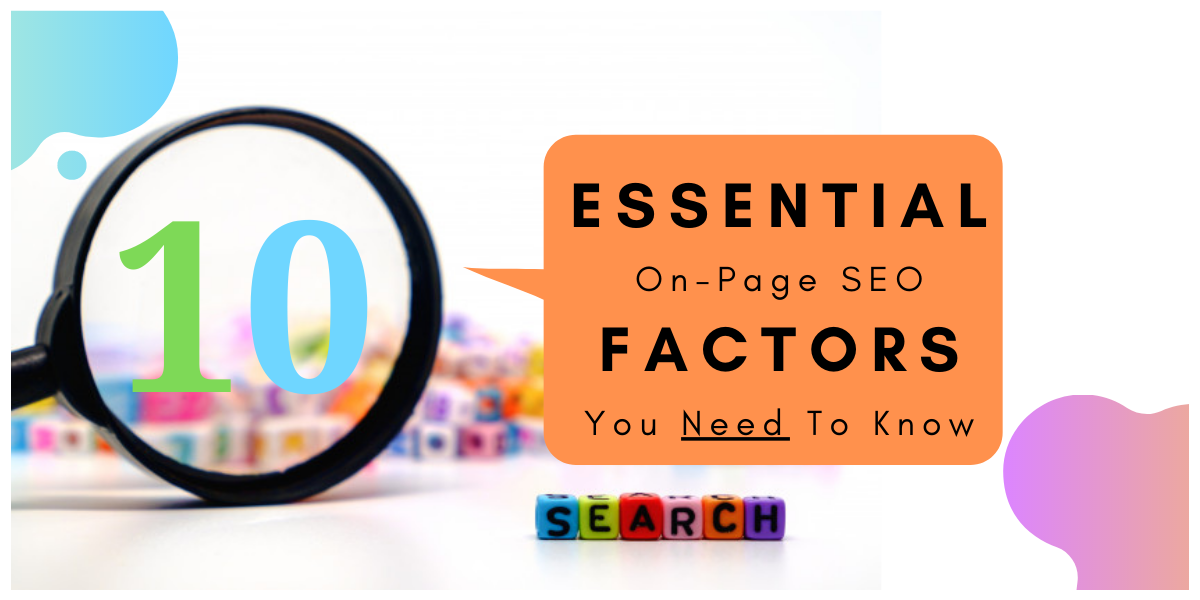Now almost 80% of brands have gone digital to promote products, share brand identity, engage none the less consumers, and of-course rollout to earn high revenue.
Perhaps, in the midst, what it means by ‘have gone digital’ although it’s a huge self-complaint word.
Frankly, it includes 21st century digital gadgets, tools, and techniques likewise million businesses (SMEs, startups, one person companies, and other forms of organization) connect with it.
One such popular and never-get old technique is SEO…! Heard of it, good.
Discover what’s On-Page SEO basically and if doing so, what consideration you need to focus on to succeed.
Hang tight, we will discuss here…!
What is On-Page SEO?
First, SEO stand for Search Engine Optimization and the process consists of two main work-bodies i.e. On-Page and Off-Page.
On-Page Search Engine Optimization refers to the human practice of optimizing home website pages to improve (as a whole) website’s search engine rankings and earn organic traffic.
It’s saying that a compiling and Google principle oriented on-page SEO is one of the richest ways to enjoy seamless benefits than paid SEO practice.
But, it is not too easy a task as it seems simple…!
Actually, On-Page SEO takes into account various aspects of the working bodies of the webpage including optimizing your headlines, HTML tags (title, meta, and header), and images.
And there is more…! Let’s read them in detail
#1. Title Tag (Don’t Overlooked)
It is reflected as an HTML tag that is present in the top/head section of each webpage. It provides somewhat cue or context to the users and readers as to what the topical subject matter is about of the respective page it is on.
Most digital marketing experts suggest that missing, duplicate, and poorly written title tags may exploit your SEO result and it gives bad impact, so make sure you’re optimizing for this element.
#2. Meta Description (User Intent Focused)
It’s a short para, two-or more line descriptive content that often gives context about the topic. Nowadays, it is important to write Google accord principal and also effects on ranking criteria.
It is displayed in the SERPs underneath the title of the page.
#3. Headlines (It Matters)
Headlines indicate the subject matter. Readers can little get an idea about the information they will read in next-step. According to the SEO principle, the headline must be attractive, user interactive, and appealing in all the way to get more readers and impression on the website.
When writing a blog or creating a headline for product and services of a webpage – it is pickle to write one with strategically.
#4. Header Tags (Metamorphose)
Simply, header tags are HTML elements ranging (H1 to H6) used to identify and metamorphose headings and subheadings. Generally, it is a good way to demonstrate your heavy-text content sweet, clear, and visible.
From Google Viewpoint it’s a ranking giving principle that must be followed in web page and other content format such as blog, press release, article, guest post, etc.
#5. Keywords (Crucial)
Keywords are those user-focused (two or more words) which content creators target their niche audience and offer them solutions for the same. Generally, search engines like to show relevant results on their page which constraint user-intent with no prior keywords cannibalization.
#6. Image Optimization (Looks Good, Feels Good)
Optimizing images flawlessly will help webpages to look good and make it visually appealing. Incorporating and enhancing images into the content with description available and alt text provides benefits such as additional ranking opportunities, better user experience, and make website faster load time.
#7. Content Audit (Maintain Credibility)
This is no new term for you, you have mainly heard a lot in the financial and banking sector. In On-page seo factor Content audit is important to maintain credibility.
Many content creators do focus on creating new content and they forget to optimize and modify existing one. Most renowned content experts say that auditing your existing content helps you to evaluate goals achievement, increase ROI of content, and much more.
#8. User Engagement (Literally Salient)
Ultimately user engagement is equal to lower bounce rate. Digital Marketers focus on on-page SEO with aim to retain users when visiting first-time to hold and utilize maximum time and also create a wishlist or may complete call-to-action.
In simple sentences, if you compete in this, you win the whole battle of On-Page SEO.
#9. SEO Writing (Consequential)
Nowadays, content writing is all about SEO writing – with both search engines and users in mind. Writing content with focus on SEO principles is an undeem skill for content writer.
Whether writing for on-page content or link-building activity, writing with SEO practice is essential in every field of stage.
#10. E-A-T (It’s New)
It is a new short term proposed by Google and loved so much that followed, effectively. E-A-T stands for Expertise, Authoritativeness, and Trustworthiness. It’s all associated with content creators, webpages, and websites.
A content intimate match with high-quality content is rewarded with better ranking. Thus, it’s a crystal clear relationship b/w Google high-quality content and what appears in the search results.
That’ all – we’ve just scratched the surface…! Now it’s your chore to follow these considerations into your On-page SEO factor and truly working on them.
Good Luck…!

